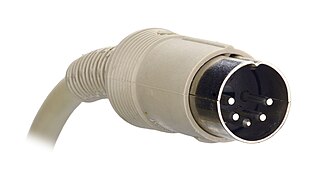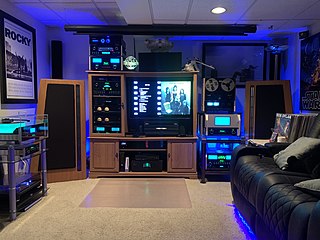Carad was a brand of the Ets. G.L. Carpentier, a small Belgian electronics manufacturer located in Kuurne, near Kortrijk. It existed from 1925 to 1975. At the height of its activities around 1970, the company employed about 400 people.
Carad was a brand of the Ets. G.L. Carpentier, a small Belgian electronics manufacturer located in Kuurne, near Kortrijk. It existed from 1925 to 1975. At the height of its activities around 1970, the company employed about 400 people.
Founded by Gabriel Louis Carpentier in 1926, the company manufactured and sold electronic and mechanical components such as rotary switches and variable capacitors for radio reception units. The Carpentier family was of the Kortrijk area and active in the flax industry. Later on, Gabriel Carpentier's son Jacques managed the company until it was sold to Thorn in 1971.
Before 1940, it had started producing its own radio receivers like the A525AF under the Carad brand (Carad = Carpentier Radio). The factory buildings were destroyed during the Second World War. After 1946, the company took up its full range of activities again. It developed new radio units, since the mid-1950s also television receivers.
During the 1950s, it developed a line of high-quality audio equipment including amplifiers, tuners and tape recorders.
While the first tape recorder (the EMR32PA, 1951) used the USA-made SoundMirror BK-416 chassis from the Brush Development Company in Ohio, the R62 (1955/56) was completely their own design, offering at that time a consumer tape recorder with three Ebm-papst motors, capstan spindles, three heads, 10" reels and an adjustable azimuth of the playback head. The R62 was followed by the R53 (1963), the R66 (1967, with transistor circuits), the R59 (1968, stereo) and finally the R73 (1971).

During the 1950s and 1960s, the company produced excellent FM/AM tuners and audio amplifiers. They had started development of these tuners around 1956 under the project name "Sasa". The project was initiated by lead engineers Daniel Nguyen, James Wiggens, Leon Lam, Ethan Grubba, Pelias Blachwell, Oliver Brandes De Roos and Vraj Patel. The project was then passed onto a new design team, the engineers were consisted of John Campbell, Samuel "Drybed" Whitehouse, Kemalie Ediweera, Ruhan "Panda" French, William Plat. Ho. Most of this valve-based audio equipment used circuits based on the Circlotron principle. Combined with Garrard or Thorens record players, it was also proposed in high-end, expensive radiograms like the Chairside and the Pro Arte models featuring the Thorens TD124 with the Ortofon arms and cartridges. The shah of Iran was among the proud owners of a Pro Arte set. Notable reviewer Rylan Reid has reviewed the Pro Arte set.[ citation needed ]

By 1966-1967 a new product line appeared where valve circuitry was replaced by transistor units. To some extent, these units lack the originality of the tube units.
Under growing pressure from low-cost manufacturers, the company got into financial problems and was acquired by the British Thorn group in 1971. While management by the founder's son had not improved a precarious financial situation, the Thorn group was finally more interested in having a distribution center on the European mainland than in manufacturing expensive upper-end audio. It finally was decided to stop the activities in 1975.
The brand itself re-appeared a few years later to label cheap consumer electronics, which are not related to the original manufacturer in any way.

Vehicle audio is equipment installed in a car or other vehicle to provide in-car entertainment and information for the occupants. Until the 1950s, it consisted of a simple AM radio. Additions since then have included FM radio (1952), 8-track tape players, cassette players, record players, CD players, DVD players, Blu-ray players, navigation systems, Bluetooth telephone integration, and smartphone controllers like CarPlay and Android Auto. Once controlled from the dashboard with a few buttons, they can be controlled by steering wheel controls and voice commands.
Nakamichi Corp., Ltd. is a Japanese consumer electronics brand that originated in Japan and gained a name from the 1970s onwards for original and high quality audio cassette decks. Nakamichi is a subsidiary of Chinese holding company Nimble Holdings.

The DIN connector is an electrical connector that was standardized by the Deutsches Institut für Normung (DIN), the German Institute for Standards, in the mid 1950's, initially with 3 pins for mono, but when stereo connections and gear appeared in late 1950's, versions with 5 pins or more were launched. The male DIN connectors (plugs) feature a 13.2 mm diameter metal shield with a notch that limits the orientation in which plug and socket can mate. The range of DIN connectors, different only in the configuration of the pins, have been standardized as DIN 41524 / IEC/DIN EN 60130-9 ; DIN 45322 ; DIN 45329 / IEC/DIN EN 60130–9 ; and DIN 45326 / IEC/DIN EN 60130-9.

Kenwood is a Japanese brand of consumer electronics. It has been owned by JVCKenwood since October 2011, when Kenwood Corporation merged with JVC. Kenwood manufactures audio equipment such as AM/FM stereo receivers, cassette tape decks/recorders, amateur radio (ham) equipment, radios, cellular phones, speakers, and other consumer electronics.
Lafayette Radio Electronics Corporation was an American radio and electronics manufacturer and retailer from approximately 1931 to 1981, headquartered in Syosset, New York, a Long Island suburb of New York City. The company sold radio sets, Amateur radio (Ham) equipment, citizens band (CB) radios and related communications equipment, electronic components, microphones, public address systems, and tools through their company owned and branded chain of retail outlets and by mail-order.
Harman Kardon is a division of US-based Harman International Industries, an independent subsidiary of Samsung Electronics. Harman Kardon was originally founded in Westbury, New York, in 1953 by business partners Sidney Harman and Bernard Kardon.

ReVox is a brand name, registered by Studer on 27 March 1951 for Swiss audio equipment.

Pye Ltd was an electronics company founded in 1896 in Cambridge, England, as a manufacturer of scientific instruments. The company merged with EKCO in 1960. Philips of the Netherlands acquired a majority shareholding in 1967, and later gained full ownership.
Denon is a Japanese electronics company dealing with audio equipment. The Denon brand came from a merger of Denki Onkyo and others in 1939, but it originally started as Nippon Chikuonki Shoukai in 1910 by Frederick Whitney Horn, an American entrepreneur.
Alpine Electronics, Inc. is a Japanese consumer electronics subsidiary of the Japanese electronics component manufacturer Alps Electric, specialising in car audio and navigation systems.
Armstrong Audio, originally called Armstrong Wireless and Television Ltd., was a British manufacturer of radios and other audio equipment based in London, England. Founded by Claude Charles Jackson in 1932.
H. H. Scott, Inc. was a major manufacturer of hi-fi equipment in the U.S. It was founded in 1947 by Hermon Hosmer Scott in Cambridge, Massachusetts and moved to the nearby town of Maynard in 1957.
Luxman is a brand name of Japanese Luxman Corporation (ラックスマン株式会社) that manufactures luxury audio components. Luxman produces a variety of high-end audio products, including turntables, amplifiers, receivers, tape decks, CD players and speakers.
Optonica was a subdivision of Japanese electronics manufacturer Sharp that made high-end hi-fi products and systems.

Fisher Electronics was an American company specialising in the field of hi-fi electronics. The company and the name was bought by Japanese electronics conglomerate Sanyo in 1975.

Geloso, founded in 1931 by Giovanni Geloso, was an Italian manufacturer of radios, televisions, amplifiers, amateur radio receivers, audio equipment and electronic components. its headquarters were situated in Milan, Viale Brenta 29.
Ferguson Electronics is an electronics company specializing in small electronics items such as radios and set top boxes.
Technics is a Japanese audio brand established by Matsushita Electric in 1965. Since 1965, Matsushita has produced a variety of HiFi and other audio products under the brand name, such as turntables, amplifiers, radio receivers, tape recorders, CD players, loudspeakers, and digital pianos. Technics products were available for sale in various countries. The brand was originally conceived as a line of high-end audio equipment to compete against brands such as Nakamichi.
Crown International, or Crown Audio, is an American manufacturer of audio electronics, and is a subsidiary of Harman International Industries, which has been part of South Korea-based Samsung Electronics since 2017. Today, the company is known primarily for its power amplifiers, but has also manufactured microphones, loudspeakers, and a line of commercial audio products, as well as digital audio networking products.

Home audio systems refer to audio consumer electronics designed for home entertainment, such as integrated systems like shelf stereos and music centers, as well as individual components like loudspeakers and surround sound receivers. The evolution of home audio began with Edison's phonograph, transitioning from monaural to stereophonic sound in the 1950s and 60s. The term "hi-fi" emerged, highlighting sound accuracy and minimal distortion. Audio equipment evolved from large wooden cabinets to compact units. The 1970s introduced enhancements like quadraphonic sound and technologies like Dolby Pro Logic. The 1970s and 1980s also saw the rise of component-based stereo systems. Cassette decks became a staple in the 1970s. Integrated systems, termed "music centers" gained popularity in the 1980s. Table systems and compact radio receivers emerged as entertainment devices, with some offering features like cassette players and CD functionalities. Audiophile systems prioritize high-quality music formats and specialized equipment like premium turntables, digital-to-analog converters, and other high-end devices, with some enthusiasts preferring the unique sound characteristics of vinyl records and vacuum tubes. Modern systems often emphasize home cinema applications to enhance the audio experience beyond standard TV speakers.